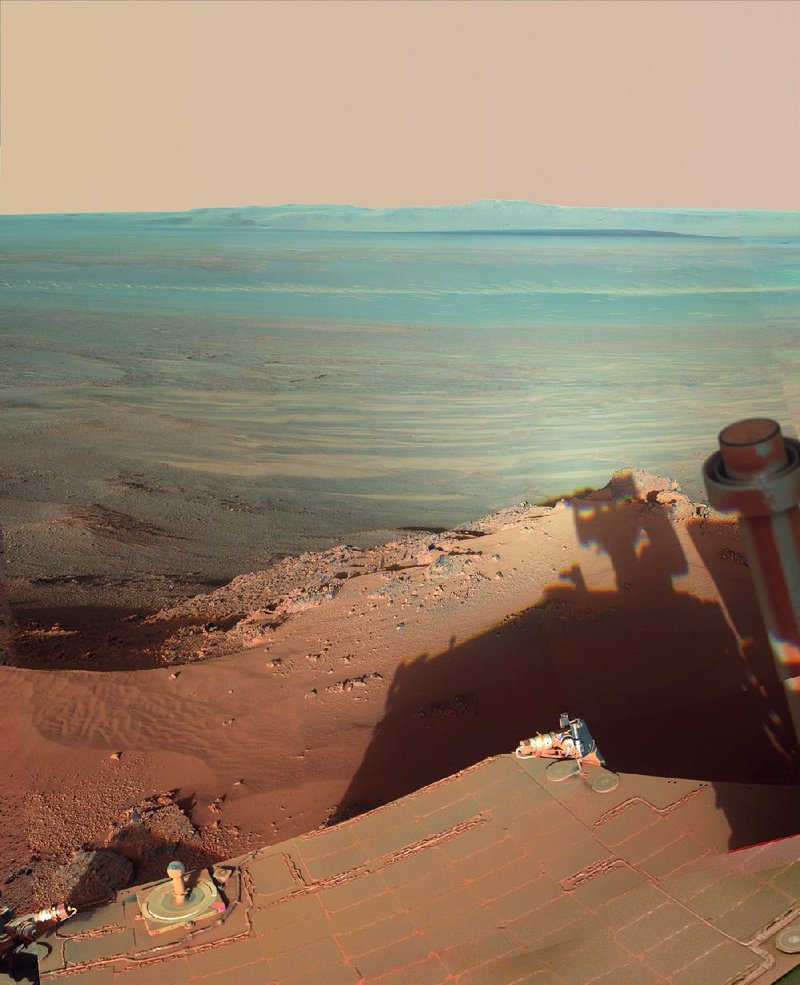A Martian dust storm covering a quarter of the planet threatens a 15-year exploration mission by NASA's Mars Opportunity rover.
Operators at NASA's Jet Propulsion Laboratory tried to contact the rover on Tuesday but did not receive a signal, which means the craft has likely entered a "low power fault mode" where all systems, save a mission clock, are shut down. The storm was detected May 30 and now fully blocks the sun at the rover's location, leaving the craft in darkness. Without sunlight, the rover cannot recharge the batteries it needs for operations.
"The project team is very concerned," said John Callas, project manager for NASA's Mars Exploration Rovers mission at the Jet Propulsion Laboratory. NASA ceased Opportunity's science operations on June 4 as engineers prepared to secure the craft against the storm, Callas said.
"At this point we're in a waiting mode, listening every day for possible signals from the rover," he said. "We're concerned but we're hopeful that the storm will clear and the rover will begin to communicate to us."
The clock periodically wakes the rover computer to check power levels. If the batteries are insufficiently charged, the computer will again enter a sleep mode, the same mode used each night to power down the rover. Opportunity can sit in the low-power mode "for an extended period of time," Callas said.
The immediate threat is that the rover, without power, could succumb to Mars' harsh overnight cold. The last temperature reading from Opportunity was -20 F (-29 C), NASA said June 10. Engineers hope the storm will provide some atmospheric shielding against the planet's dramatic daily temperature swings, Callas said. The rover can withstand temperatures of -67 F (-55 C) and NASA expects the lowest temperature at this time of the year to reach -33 F (-36 C) at Opportunity's location.
Opportunity and its twin rover, Spirit, landed in January 2004. Both were scheduled to complete 90-day geology missions but were able to operate for years beyond that. Spirit sent data until March 2010 when it became lodged in sand and NASA was unable to extricate it. Besides Opportunity, the agency also operates the larger Curiosity rover, which touched down in August 2012. In May, NASA launched Mars InSight, a probe to study the planet's inner geology, with landing scheduled in late November.
Mars experiences regional dust storms annually, but only occasionally do they expand to engulf the entire planet. The last such major storm occurred in 2007, which sent NASA's rovers into a "hunker down" mode for several weeks before the skies cleared.
The storms, which begin during the southern hemisphere's summer, are fueled by sunlight warming the surface-level air. That leaves the air in the upper atmosphere cooler than below and an unstable mix emerges; as the warmer air rises, it carries dust into the skies. Such storms last for weeks, or sometimes months, but stop when the air temperatures equalize.
The storms' cyclical nature, however, are poorly understood. One of the principal objectives of NASA's Mars Reconnaissance Orbiter, one of three U.S. satellites designed to analyze the planet, is to enhance understanding of Martian meteorology.
"Not all Mars watchers are thrilled with the idea of a global dust storm, which can adversely affect ongoing missions," NASA noted in a January news release for the Reconnaissance Orbiter, which also described the precise loss-of-power scenario Opportunity now confronts.
Once the storm clears, and if NASA engineers can re-establish contact with Opportunity, they may find another vexing problem: "We may have a lot of dust on this vehicle that we have to deal with," Callas said.
SundayMonday on 06/17/2018

